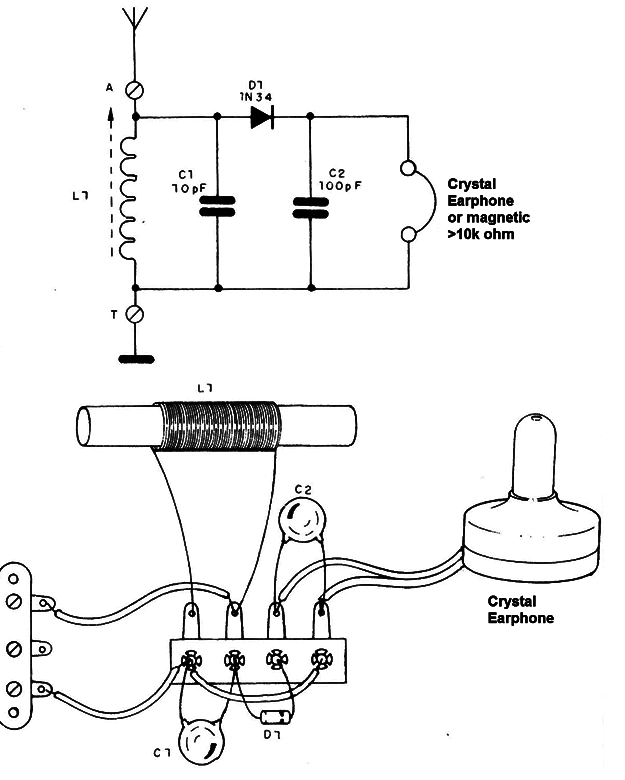This ultra-simple radio, for the medium wave range, does not need batteries or any other power source. The energy comes from the very radio waves that are picked up. An excellent project for STEMers.
The coil L1 consists of 80 turns of enamelled wire, from 26 to 30, in a cardboard tube, through which the ferrite rod can slide. The movement of this ferrite stick is what tunes the stations.
The diode D1 may be any made of germanium, such as 1N34, 1N60, OA89 etc. The headset must be of crystal, or, therefore, magnetic of high impedance.
The capacitors C1 and C2 are ceramic, and for good reception, it is essential an efficient earthing, in addition to an adequate antenna.
Grounding can be done on any metal object in contact with the ground, such as a water pipe, an aluminum frame or the neutral pole of the socket (or ground).
The antenna must be well insulated and at least 10 meters long because the sensitivity of the radio depends on the number of signals that may be intercepted by it. If no sound signal is heard in the headset, it is because it is not made of crystal or high impedance. Try checking.

D1 - 1N34 germanium diode or equivalent
L1 - see text
C1 - 10 pF - ceramic capacitor
C2 - 100 pF - ceramic capacitor
Miscellaneous:
A terminal strip, a high impedance crystal or magnetic phone, wires, weld, an external antenna etc.



